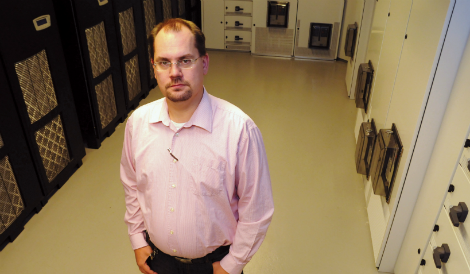There is a widespread belief that improving the resilience of a data center UPS (Uninterruptible Power Supply) installation means that its energy efficiency will decrease and its running costs will increase.
With the latest UPS technologies, however, this doesn’t have to be the case
What data center customers want is 100% availability and, above all, absolute protection against data loss. In other words, they want a level of resilience sufficient to ensure that the operation of the data center will not be affected by faults and failures, whatever form these take.
Both the energy efficiency and the resilience of a data center depend on numerous factors, but one of the most important is its UPS system. There are, however, challenges in designing a UPS system that offers both resilience and efficiency, while also meeting other requirements such as scalability.
Most data center users require UPS systems that are easily scalable to allow for future growth. Scalability can only be achieved by using a modular design at either the system or individual UPS level, and a feature of any modular design is that individual UPSs must operate in parallel and must reliably share the load. With conventionally designed UPSs, however, this type of arrangement can have a negative impact on resilience and the level of this impact typically increases as more modules are connected in parallel.
This is because, with traditional designs, load sharing is typically achieved by using a central controller and by arranging for the UPS modules to communicate with each other to share load-balancing information. Unfortunately, this communication system is potentially a single point of failure that, if it fails, could lead to the whole UPS system going out of service. Additionally, as more modules are added, there are more components in the critical path and the risk of failure increases.
This issue has been fully addressed by the development of modular UPS systems where each module has an internal load balancing system. This load sharing system operates without the need for a central controller or for inter-module communication, thereby eliminating the potential single point of failure associated with traditional modular designs. Also, in principle any number of modules with internal load balancing can be interconnected with no increase in component count on the critical path.
Keeping in mind the desirability of modular topology as a way of achieving scalability, let us now turn to the central issue of resilience versus efficiency. Without doubt, the key to increasing resilience is to build more redundancy into the UPS system. Unfortunately, adding redundancy in traditional systems reduces load levels on the individual UPS modules and lightly loaded modules are invariably inefficient.
The solution here is the emergence of new technologies that, instead of sharing the load equally between all of the power modules in the UPS system, concentrate it on just enough modules to satisfy the immediate demand for power.
This means that the on-load modules are well loaded and therefore operate efficiently, while the off-load modules can be put into a state where they consume almost no power at all. Switching the off-load modules to normal operation takes only a couple of milliseconds, ensuring that the loads supplied by the UPS are unaffected by the transition.
In the best systems (that use this technology) the individual UPSs are made up of several power modules. An accurate match can, therefore, be achieved between instantaneous power requirements and the number of modules that need to be in service to meet these requirements, which means that energy efficient operation can be achieved at all load levels.
Another development that is helping to boost the energy efficiency of highly redundant UPS installations is the emergence of UPSs with energy saver functionality. Typically incorporated in the double-conversion UPSs that are the first choice for almost all critical data center applications, this functionality works by, in effect, feeding the load direct from the mains supply when this supply is within tolerance and problem free, but switching to normal double-conversion within two milliseconds of a mains supply problem occurring. In energy saver mode, efficiencies of 99% or even better can be achieved and the transition between energy saver mode and normal operating mode is completely invisible to the connected loads.
An important by-product of these new UPSs is that, because they have lower losses than conventional types, they produce less heat and, therefore, require less cooling. This means that users save energy and money not only on the primary function of providing a secure supply for their IT loads, but also on the running costs of their air-conditioning and cooling systems.
While discussing air conditioning and cooling, there is another issue to consider; namely “free cooling” as a way of minimizing operating expenditure. But, in practice free cooling means that the temperature of the air flow used for cooling may be as high as the ambient limit specified for the UPS installation or, in some cases, even higher. The way that the UPS system behaves under these conditions has a direct impact on resilience.
If maximum resilience is to be achieved, the UPS should operate to its full specification right up to the specified ambient temperature limit, and it should not trip even if the temperature goes higher, unless its internal temperature limits are exceeded. UPS designs where de-rating or other restrictions apply at elevated temperatures will not meet these requirements.
It is clear that increasing the redundancy of a UPS system to boost its resilience doesn’t have to bring energy efficiency penalties and also that modular UPS installations can now be just as reliable as their non-modular counterparts. And, the benefits discussed here are not future dreams – they’re available now, and have been proved in data centres around the world.

